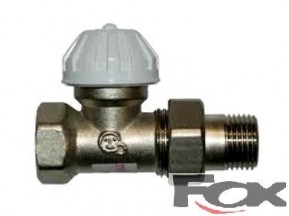Hello,
in our new apartment in a block of flats we have old cast iron radiators (block from the 1970s). There are no heat allocators on the radiators. Each temperature control valve is broken (probably due to old age) and water is dripping from them, so I wanted to replace these knobs with, for example:
http: // allegro ...
Can such knobs be inserted into old radiators? Can you replace it yourself without draining the water from the entire block?
If they cannot be replaced, what to do with the leaking knobs?
in our new apartment in a block of flats we have old cast iron radiators (block from the 1970s). There are no heat allocators on the radiators. Each temperature control valve is broken (probably due to old age) and water is dripping from them, so I wanted to replace these knobs with, for example:
http: // allegro ...
Can such knobs be inserted into old radiators? Can you replace it yourself without draining the water from the entire block?
If they cannot be replaced, what to do with the leaking knobs?
Moderated By mirrzo:I deleted the link to the auction
3.1.18. (10.11) It is forbidden to publish information for sources that expire after a certain time (publication of links to pages of a short-term nature).




